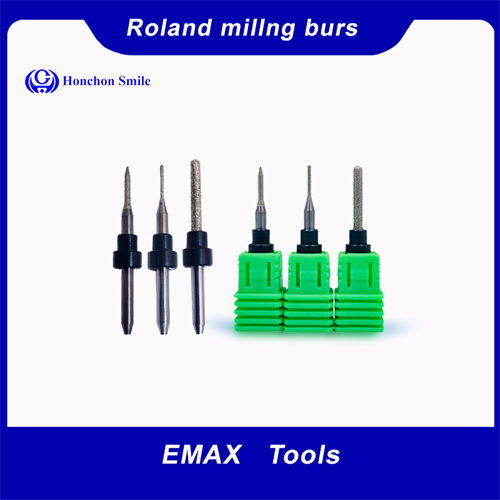Transforming Restorative Dentistry with Cutting-Edge Technology
Transforming Restorative Dentistry with Cutting-Edge Technology
Blog Article
The globe of dentistry has actually experienced a cutting edge makeover over the last couple of decades, with dental CAD/CAM (computer-aided design/computer-aided production) innovation at the forefront of this advancement. This sophisticated advancement employs innovative software application and specific equipment to design and manufacture dental reconstructions, such as crowns, bridges, inlays, veneers, and onlays. Dental CAD/CAM milling burs are an important part in this procedure, playing an essential duty fit complex dental reconstructions with amazing accuracy.
Milling burs are reducing tools utilized along with dental milling equipments to take and end up dental prosthetics from various products. These tools have to be sharp and very durable, offered the precision called for and the firmness of products they frequently collaborate with. Normal products include steels, resins, and porcelains, although increasingly, zirconia has come to be the material of selection for numerous dental repairs due to its exceptional toughness, biocompatibility, and aesthetic possibility.
Dental zirconia spaces, occasionally referred to as zirconia discs or blocks, are pre-manufactured forms of zirconia made use of in the milling process. The manufacturing of dental zirconia begins with the development of these spaces.

Explore the most recent innovations in dental CAD/CAM modern technology, zirconia milling, and 5-axis dental milling makers that are revolutionizing restorative dentistry. Discover exactly how technologies like Dental CAD CAM Milling Burs are improving performance, precision, and client satisfaction in contemporary dental treatment.
Once the zirconia spaces are created, they need to be sintered, normally in a zirconia sintering furnace. The sintering process is vital, as it maintains the zirconia structure and locks in its aesthetic and biocompatible high qualities.
Advanced milling equipments, particularly 5-axis dental milling equipments, have reinvented the manufacturing of dental remediations. Generally, dental restorations needed labor-intensive procedures and a considerable amount of time to create. The advancement to 5-axis technology has transformed this dramatically. Unlike 3-axis devices, which relocate in 3 linear axes (Y, z, and x), 5-axis equipments add two extra rotational axes (A and B). This offers the milling machine the flexibility to approach the zirconia blank from any kind of angle, which is seriously important for producing intricate forms and undercuts precisely and successfully. The outcome is precision-crafted remediations that fit much better, really feel extra comfortable, and look more all-natural.
These ingenious materials combine the benefits of multi-layered zirconia with the accuracy of 3D printing modern technology. The multi-layered facet refers to the slope in shade and translucency within the zirconia block, imitating the natural transition from dentin to enamel located in actual teeth.
3D printing modern technology has actually added another layer of customization and accuracy to this strategy. By incorporating CAD/CAM styles with 3D printing, the elaborate details of the dental restoration can be recorded and published layer by layer. This causes even higher precision in fit and appearances, which is extremely important for individual complete satisfaction.
The mix of dental CAD/CAM systems, top quality milling burs, dental zirconia spaces, innovative sintering furnaces, 5-axis milling equipments, and the most current development in 3D plus Multilayer Blocks exhibits the future of dental prosthetics. Dental professionals can offer far better service with quicker turn-around times, while individuals benefit from even more durable, better-fitting, and cosmetically pleasing remediations.
For instance, the accuracy managed by these innovations suggests prosthetics can be created and fabricated with a high level of precision, minimizing the need for repeated fittings or modifications. This level of accuracy is mainly driven by the quality of dental CAD/CAM systems and the usage of premium milling burs efficient in great detailing. The processing of dental zirconia spaces in zirconia sintering furnaces makes certain that the final product satisfies the highest possible requirements of longevity and biocompatibility.
The advent of 5-axis dental milling makers has actually widened the range of what is feasible in corrective dental care. These machines can mill complex geometries and fine information which were not feasible prior to, leading the way for much more advanced dental services.
On top of that, the continual growth in zirconia products and CAD/CAM modern technologies perpetuates a much more effective and efficient dental treatment setting. Dental practitioners can currently attain more predictable outcomes, minimizing chair time and boosting individual fulfillment. The detailed combination of these modern technologies into regular dental technique indicates a seismic shift from responsive to aggressive dental treatment, where electronic impressions, accurate milling, and instant modifications come to be common technique.
By reducing material waste and maximizing the use of resources, dental practices can run much more sustainably. The international assimilation of these innovative materials and machines into dental educational program makes certain that future dental experts are well-versed in the most current technological breakthroughs, cultivating a society of consistent enhancement and advancement.
In summary, the synergy between dental CAD/CAM systems, robust milling burs, high-quality zirconia spaces, efficient zirconia sintering heating systems, cutting edge 5-axis dental milling devices, and innovative 3D plus Multilayer Blocks is driving a brand-new era in dentistry. This mix is transforming how dental restorations are created, produced, and executed, resulting in far better outcomes for both people and dentists. As innovation remains to advance, the future holds also much more promise for improvements that will better revolutionize dental care, making it extra accurate, reliable, and patient-friendly than ever previously. Report this page